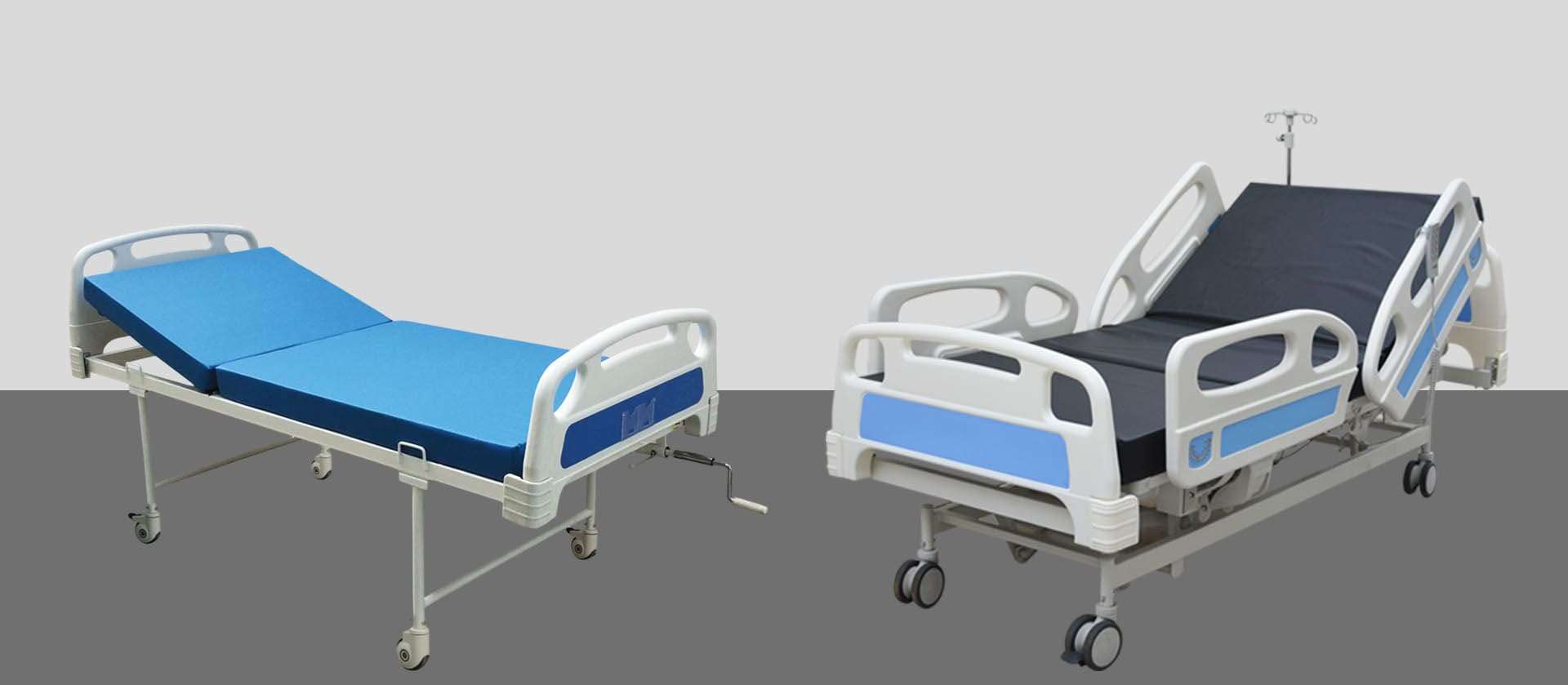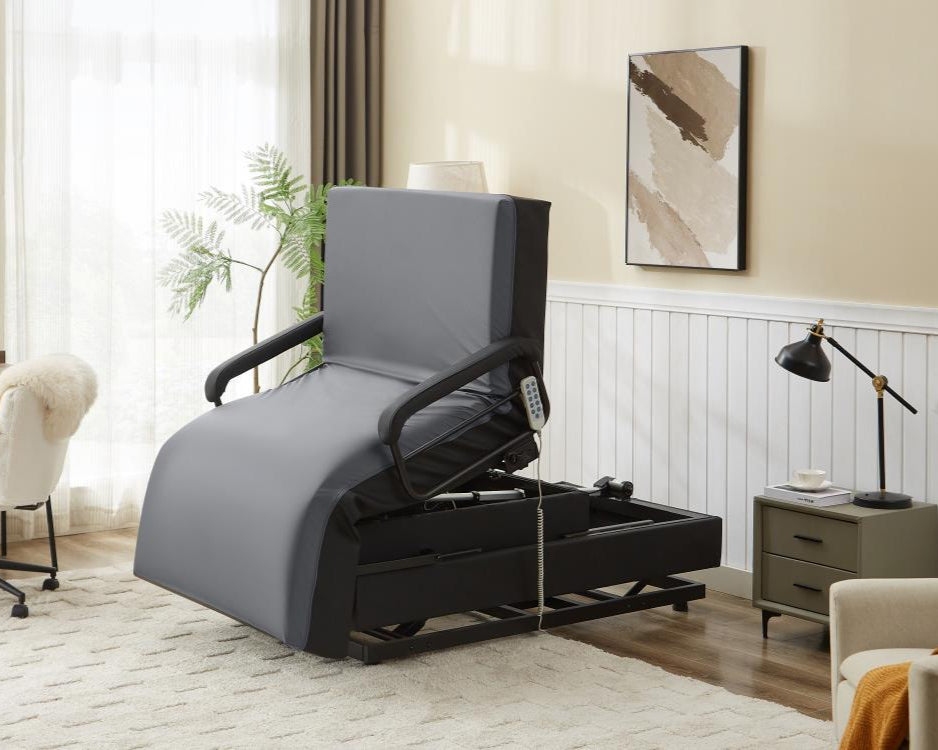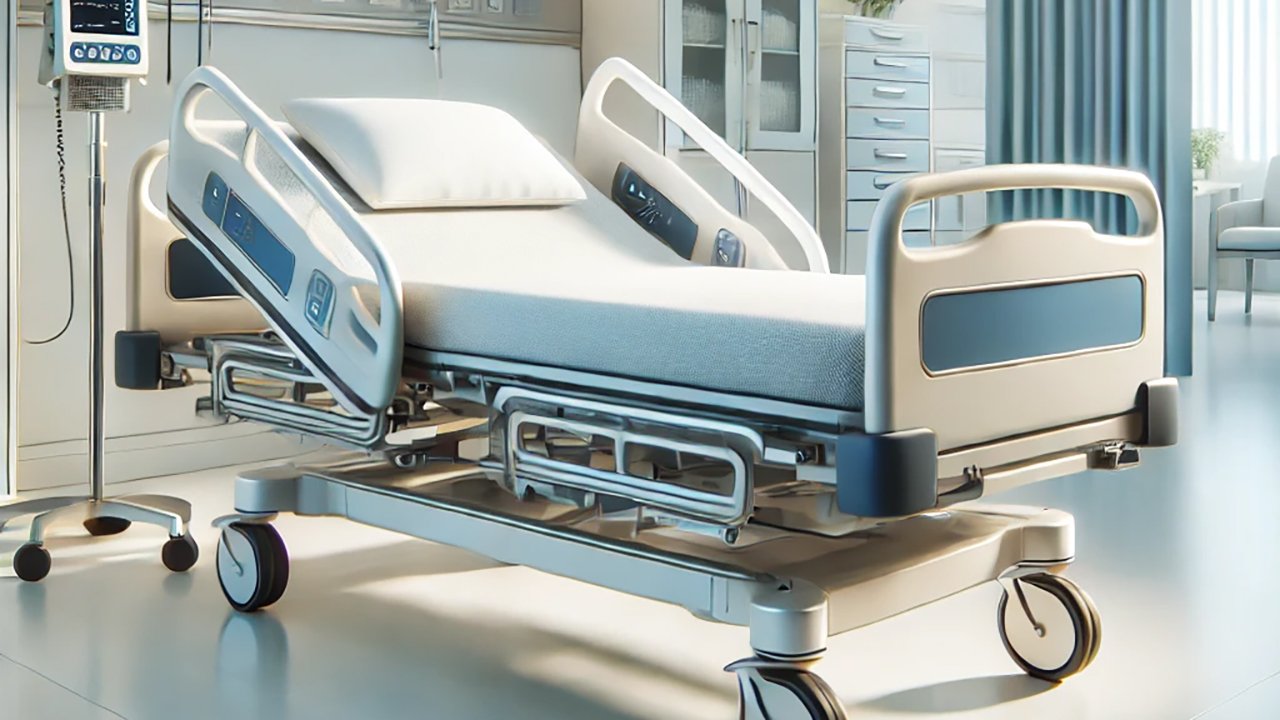Some Known Details About Hospital Beds For Home Use
Table of ContentsFascination About Hospital Beds For Home UseThe Facts About Hospital Beds For Home Use RevealedThe Definitive Guide to Hospital Beds For Home UseHospital Beds For Home Use Things To Know Before You Get ThisThe Main Principles Of Hospital Beds For Home Use The 5-Minute Rule for Hospital Beds For Home UseHow Hospital Beds For Home Use can Save You Time, Stress, and Money.
All changes are managed electrically, which is simple to run and very accurate. It appropriates for events where people have limited mobility or need to change their stance frequently. Next, we will certainly check out the characteristics, uses, and Benefits and drawbacks of each type of healthcare facility bed detailed. A hand-operated health center bed is the many basic sort of hospital bed, and all adjustment functions are achieved through a hand-cranked tool.These hand-cranked devices are normally installed at the foot or side of the bed, and the caregiver or individual can readjust the height or tilt angle of the bed by shaking the deal with. Considering that no electrical parts are required, are typically more affordable than electric hospital beds, appropriate for medical establishments or family members with limited budgets.
The Buzz on Hospital Beds For Home Use
For people who require to readjust their pose or elevation frequently, hands-on beds might not be practical sufficient because each modification calls for manual operation. If the bed requires to be readjusted frequently, nursing staff may require to invest more physical strength to operate the hand-cranked gadget - hospital beds for home use. Guidebook beds are usually appropriate for people in the recovery period or events with reduced nursing needs
Normally, the modification of the back and legs is regulated by electric motors, while the general elevation adjustment still requires to be done by hand. The purpose of this layout is to decrease expenses and power consumption while preserving high operational comfort. Compared with hands-on healthcare facility beds, semi-electric medical facility beds are much more hassle-free in adjusting the back and legs, especially for individuals that need to change their position regularly.
Because just some features rely upon power, semi-electric hospital beds consume less power throughout use. Because the total height still requires to be readjusted manually, it may not be as practical as fully electrical health center beds for patients who need to adjust the bed elevation regularly. Compared to hands-on medical facility beds, semi-electric medical facility beds are slightly more intricate to run, needing users to understand the mix of electric and manual procedures.
Electric health center beds have high change precision and can be precisely adapted to a details angle and elevation according to the requirements of patients to provide one of the most comfortable support. All-electric health center beds are generally furnished with a variety of added functions, such as integrated scales, mattress stress adjustment, and so on, to meet the unique needs of various clients.
The Definitive Guide to Hospital Beds For Home Use
A low bed is a particularly developed medical facility bed that can be readjusted to a very low degree, usually only a couple of inches from the ground. The objective of this design is to minimize the threat of patients falling from the bed, particularly for people who go to risk of falling, such as the elderly or individuals with minimal movement.

The 30-Second Trick For Hospital Beds For Home Use
give a treatment setting ideal for youngsters's height and Read Full Article physique, enhancing the comfort and safety of children. Some pediatric beds are additionally equipped with brightly tinted bed rails or anime designs to minimize the concern of kids in the healthcare facility environment. For children that need to remain in bed for a long period of time, pediatric beds are generally furnished with anti-bedsore bed mattress, flexible bed rails and various other functions to give thorough treatment support.
The delivery bed is additionally furnished with postpartum recovery features, such as bed mattress change, bed heating, etc, to assist mothers blog recoup quicker. The intensive treatment bed (ICU Bed) is designed for the critical care unit (ICU) and has extensive surveillance and nursing functions. This kind of bed is typically outfitted with user interfaces for a range of tracking devices, which can keep an eye on the client's important signs in actual time, such as heart price, blood pressure, respiration, and so on.
More About Hospital Beds For Home Use
The intensive treatment bed has a totally electric adjustment function, which can swiftly readjust the angle and placement of the bed to meet the requirements of different therapies and treatment. The layout of ICU bed takes into consideration the requirement of rescue operation. The bed can be promptly gotten used to the most appropriate rescue pose and accept making use of rescue devices.
It can successfully separate clients from the outdoors and decrease the risk of infection transmission. Isolation beds are normally geared up with unique bed curtains or securing covers and attached to air filtration systems to keep the air around the bed clean. Seclusion beds are specifically developed to avoid the spread of pathogens from transmittable people and secure the safety of other individuals and clinical personnel.
Isolation beds are furnished with air filtration systems that can filter bacteria and particle matter in the air to keep the air around the bed clean. Can additionally be changed to different settings.
The Single Strategy To Use For Hospital Beds For Home Use
Broader and sturdier than a standard bed. Obese, obesity, client sizeDesigned for patients at danger of befalling of bed. Reduced to the ground than a standard bed. Individual falls, bed heightDesigned for youngsters. Smaller in size than a common bed. Pediatrics, child-sized equipmentUsed throughout childbirth. Furnished with features such as braces and a headrest.

In a medical link care setting, selecting the right bed can not only improve the performance of treatment, however additionally substantially enhance individual comfort and safety and security. By understanding the types and uses of these beds, health care centers and household caregivers can better sustain and look after their clients.
Some Known Facts About Hospital Beds For Home Use.
HomeCare Hospital Beds, a department of DiaMedical U.S.A., is devoted to supplying complete transparency for its clients. People can be bewildered by the different choices in lengthy term care products, and HomeCare Health center Beds is dedicated to streamlining this process, while guaranteeing clients get the information and support they require.
Medicare Component B (Medical Insurance) covers health center beds as durable clinical tools (DME) that your medical professional recommends for usage in your home. After you fulfill the Part B deductible you pay 20% of the Medicare-approved amount (if your vendor approves task). Medicare pays for various kinds of DME in various methods.
